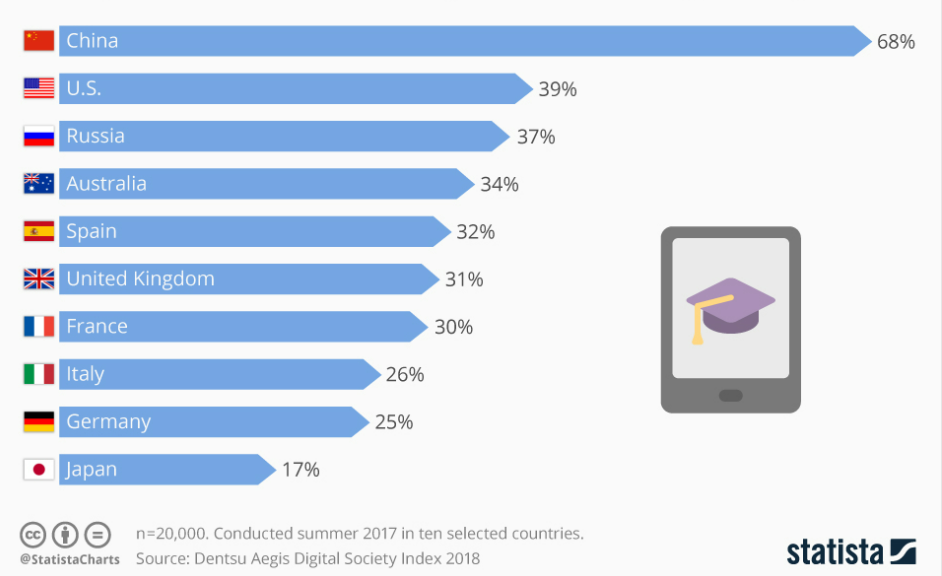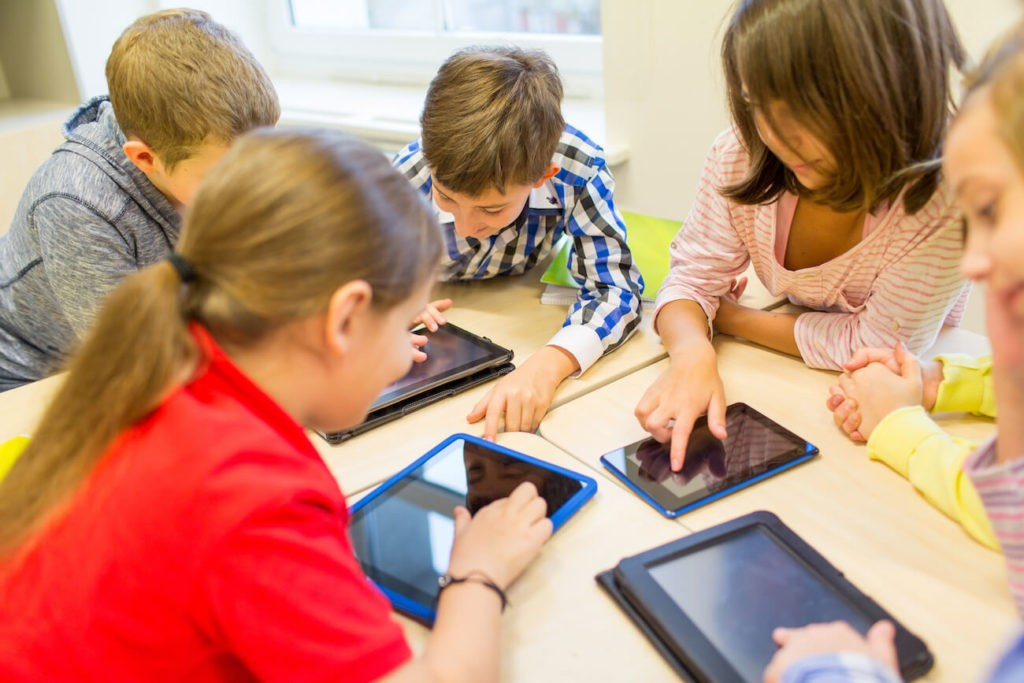The classroom has advanced significantly from basic chalkboards and chalk to interactive displays, from heavy textbooks to iPads and tablets, and from library research to smartphone information access. Virtual Reality (VR) and Augmented Reality (AR) will make it far more immersive in the future, so it is not the same anymore.
This blog will look back at how things used to be and see how technology has made learning better and education exciting.
The evolution of classroom technology adopted by countries
 1. Chalkboards to Smartboards: The Digital Leap
1. Chalkboards to Smartboards: The Digital Leap
Back in the day, teachers used chalkboards and chalk to explain lessons and concepts. Now, we have smartboards that act like giant touchscreens. Teachers can display images, videos, and even interactive lessons. It’s like magic happening right before our eyes. Research also proves that students remember more of what they see in the classroom.
2. Laptops and Tablets: A Library in Your Bag
Imagine carrying a whole library with you to class. That’s what laptops and tablets offer. They let us access a world of information with just a few clicks. Plus, they’re great for taking notes and working on projects, and they help us find facts and create cool projects.

Image source: teach hub
- E-books are like books on a magic screen. You can carry hundreds of them without a heavy bag!
- They’re eco-friendly, and you can even change the words to make them bigger or smaller
3. Virtual Reality (VR) and Augmented Reality (AR): That Feels Like a Game
Virtual Reality (VR): AR enhances the scene in the actual world. For instance, the 3D View makes it simple for a science instructor to describe human organs. While the teacher discusses the object, the students may view its sides in real time.
Augmented Reality (AR): Imagine going on a safari in the rainforest without ever leaving your classroom. It is possible thanks to virtual reality. Immersive learning is the key to helping kids learn more quickly, remember information, and comprehend a subject.
Both VR and AR are like magic glasses that bring fun and learning to life by changing how you see the world.
4. E-books: Your Personal Bookshelf
E-books have changed how we read. Instead of lugging around heavy books, we can now carry an entire library on a small device. With adjustable font sizes and interactive features, reading has become more enjoyable than ever and easy to carry.
5. Helps students with different learning styles.
Students learn differently and at various speeds. Technology helps teachers adjust information to match each student’s learning style. It also lets students learn at their own speed and in an efficient way.
6 AI-powered Learning: Personalized Education:
AI is like a smart study buddy! It knows how you learn and adjusts lessons for you. It’s like having a friend who helps you succeed in your studies. AI watches your progress and makes sure you’re learning in the best way for you. It’s like having a personal coach for learning.
7: Internet Homework Assignments
Using online platforms such as Blackboard, Brightspace, Google Classroom, and Moodle to post homework is a great step towards incorporating technology in teaching. It makes assignments readily available, boosting student engagement and fostering better organization among students.
8: Parent easily track the progress of their children
Nowadays, parents also track the student’s progress and interact with teachers easily. This will help the parents to track their child and their study progress.
Conclusion
As technology is evolving faster, teachers must stay updated to equip students for our rapidly changing world. Bringing technology into classrooms can make learning better. Yet, we shouldn’t forget traditional ways. Technology is a tool, not a total substitute. It should enhance education and boost learning results. This way, it can truly make a big difference in how students learn in Nowadays.
Moonpreneur is on a mission to disrupt traditional education and future-proof the next generation with holistic learning solutions. Its Innovator Program is building tomorrow’s workforce by training students in AI/ML, Robotics, Coding, IoT, and Apps, enabling entrepreneurship through experiential learning.
























